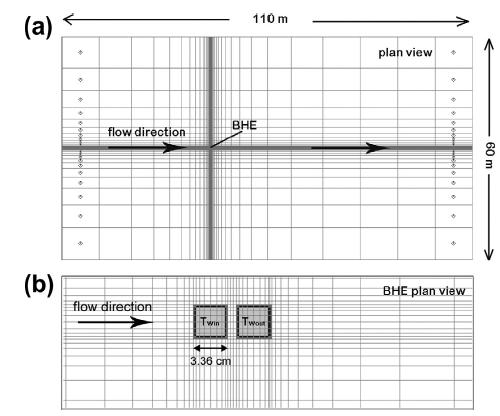
Ground source heat pumps systems likely to use low enthalpy resources are gradually spreading, representing one of the most efficient and low environmental impact technologies for cooling and heating of buildings. Most common geothermal systems are made up of closed loop boreholes (Borehole Heat Exchangers or BHEs) buried into the ground, typically 100 m deep, where a thermal-carrier fluid is circulated into polyethylene U-pipes, extracting heat from the ground in winter and/or injecting heat into the ground in summer.
The energy performance of these systems depends on the heat transfer process between the BHEs and the ground. In many applications the ground can be considered as a purely conductive medium: in fact this hypothesis is at the base of many commercially available tools used to design BHEs, such as GHLEPRO or EED (Hellstrom 2001). Therefore some efforts have recently been carried out to include the effects of the presence of a groundwater flow into the BHEs modeling (Diao 2004). In this case the heat is transported not only by conduction but also by advection. Extending this problem could change the correct prediction of the energy performance of the BHEs and the investigation of the thermal impact, in terms of the temperature perturbation produced by the BHEs operation in surrounding aquifer. The aim of this work is the evaluation of these two aspects, varying the rate of groundwater flow velocity and dispersion coefficient using a numerical model realized through Modflow/MT3D (Angelotti 2014), already validated with respect to the Moving Line Source analytical solution (Molina-Giraldo 2011), demonstrating that both advection and dispersion play an important role in the heat transfer. Especially the dispersion coefficient is important because it depends on the ground heterogeneities, influencing the plume temperature in the ground.
| Attachment | Size |
|---|---|
| 357.06 KB |
